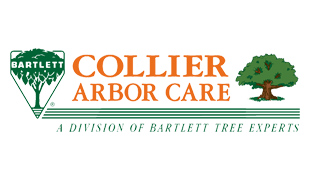April
- Reseed bare areas in lawn, over-seed thin areas.
- Treat for leaf blight diseases on dogwood, sycamore, and flowering trees.*
- Prepare garden soil for spring planting if it is dry enough.
- Plant vegetables; cucumbers, carrots, onions, radishes.
- Treat diseases on fruit trees like apple scab, brown rot and blossom blight on cherry trees.*
- Check trees for leaf feeding caterpillars and treat if needed.*
- Control slugs by baiting or beer traps.
May
- Fertilize lawns. Also apply weed control if necessary.*
- Fertilize rhododendrons and azaleas.*
- Control moles by trapping.
- Inspect and treat plants for aphids, use insecticidal soap, for leaf-feeding insects use B.T. or pyrethrins.*
- Plant warm season vegetables; corn, tomatoes, peppers, potatoes, pumpkin, squash.
- Place pheromone traps in apple and pear trees to detect codling moth. Plan a control program of sprays, traps or predators.*
- Inspect and treat rhododendruns and azaleas for lace bugs that cause yellow stippled leaves.*
June
- Treat for adult root weevils in rhododendrons, azaleas, primroses, viburnums, and other ornamentals.*
- Use composted mulch to conserve moisture and prevent weeds around plants.
- Lawn mowing: set blade height for 1.5 to 2.5 inches for most lawns. žGrass cycleÓ by returning grass clippings back to the lawn with a mulching mower.
- Prune spring flowering shrubs like azaleas, rhododendrons, forsythia, and lilacs after blooming.*
- Shear hedges like arborvitae, boxwood, and laurel after spring flush of growth.*
- Trees infected by spring diseases will begin dropping foliage. Prune out infected branches. Rake up and destroy fallen infected leaves. Fertilize to encourage new growth.*
*Services provided by Collier Arbor Care
|
July
- Early morning is the best time to water gardens and lawns. Water deeply and infrequently.
- Treat for root weevil adults when new feeding damage (notching) is present on foliage.*
- Treat for scale insects emerging from eggs as crawlers. Sticky honeydew and black sooty mold are signs of scale infestation. Look for scale on camellias, holly, maple and rhododendron.*
- Watch for signs of spider mites on arborvitae hedges and spruces. Look for: dusty-looking foliage, loss of green color, and presence of tiny mites. A good preventative is to hose off your plants with water on a weekly basis. Treat with soap or oil when damage is noticed.*
August
- Make compost of lawn clippings and garden plants that are ready to be recycled.
- Control yellow jackets and wasps with traps and lures or by treating nests.*
- Fall webworm webbing appears in ornamentals and shade trees, prune out nests and destroy, or, if necessary, treat.*
- Monitor garden irrigation closely so crops and ornamentals don't dry out.
September
- Apply parasitic nematodes to soil beneath rhododendrons and azaleas affected by root weevils.*
- Plant lawns until October 15 in western Oregon.
- Treat lawn weeds now; aerate.*
- Have our certified arborists recommend ways to storm-proof your trees.*
- Aerate lawns to improve rooting, relieve compaction, improve uptake of nutrients, and better water infiltration.*
*Services provided by Collier Arbor Care
|
October
- Recycle disease-free plant material and kitchen vegetable scraps into compost.
- Good time to plant new trees and shrubs or transplant existing ones.
- Apply preventative weed control in landscape beds, pull or treat existing weeds.*
- Take care of soil drainage needs of lawns and landscape needs before rain begins.
- Treat stone fruit trees to prevent various fungus and bacterial diseases.*
- Clean and oil tools and equipment before storing for winter.
- Plant spring flowering bulbs like crocus, daffodils and tulips.
November
- Apply lime to lawns.*
- Treat roots of trees and shrubs with beneficial mycorrhizae fungus to increase rooting, nutrient uptake, and help protect from certain root diseases.*
- Plan erosion control; use mulches, fir boughs, etc., to prevent compaction from rain and from soil washing.
- Rake and compost leaves that are free of diseases or insects.
- Provide winter protection to built-in sprinkler systems; drain the system, insulate the valve mechanisms.
- Reduce fertilizer applications to houseplants.
- Prepare lawnmower, other garden equipment for winter storage. Drain and store hoses carefully to avoid damage from freezing.
December
- Cut holly for holiday decorations.
- Make holiday decorations from trees and shrubs in the yard.
- Tie limbs of columnar evergreens to prevent snow breakage.
- Subsurface fertilize ornamental trees and shrubs to enhance spring growth and health.*
*Services provided by Collier Arbor Care
|
January
- Prune trees by removing dead wood and trimming to reduce hazards.*
- Plant bare-root deciduous fruit and shade trees.
- Have a soil test performed on your garden, lawn or landscape soil. Optimum soil ph is 6.0 to 6.5.*
- Treat with dormant sprays of lime sulfur or copper for general disease control of fruit trees, peaches for leaf curl and roses.*
- Prune fruit trees. Thin suckers, remove deadwood and increase light penetration.*
- Plan now for garden improvements. Order seeds for planting vegetables and flowers
February
- Fertilize lawns; use iron products for moss control if necessary.*
- Tune up lawn mower and garden equipment before the busy season.
- Check spruce trees for aphids and treat with insecticidal soap if found.*
- Prune roses back to 3-6 vigorous canes, knee high after mid February.
- Good time to plant new roses.
- Systemic aphid treatment on susceptible trees like: birch, oaks, maples, and tulip trees.*
March
- Fertilize trees and shrubs.*
- Plant cool season crops: lettuce, cabbage, peas and cauliflower.
- Check lawns for damage by crane fly grubs and treat if necessary.*
- Divide perennials like hosta, daylilies, and peonies.
- Treat early blooming flowering and fruit trees like peaches, plums, flowering plums and cherries for disease problems.*
- Plant new trees in landscape.*
*Services provided by Collier Arbor Care
|









